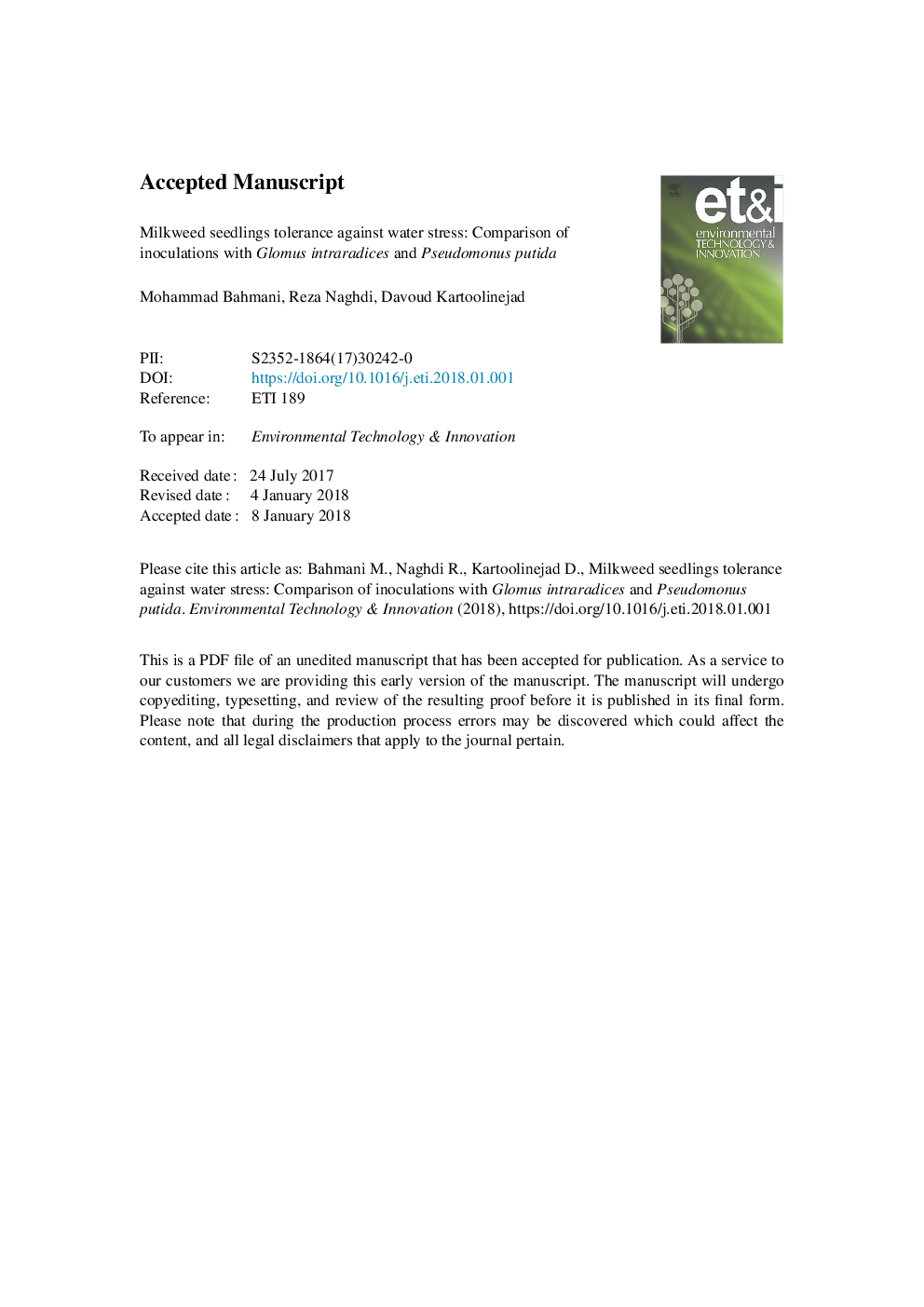| Article ID | Journal | Published Year | Pages | File Type |
|---|---|---|---|---|
| 8857974 | Environmental Technology & Innovation | 2018 | 21 Pages |
Abstract
This study aimed to investigate the concentration of nutritive elements as well as the antioxidant activity of enzymes such as catalase, superoxide dismutase, ascorbate, and peroxidase in Calotropis procera Ait. inoculated by soil-borne microbes, e.g., mycorrhizal fungus and growth-promoting bacteria, under drought stress in greenhouse conditions. Experiments were conducted at three inoculation levels (non-inoculated or control, Rhizophagus irregularis (Glomus intraradices) mycorrhizal fungus, and Pseudomonas putida rhizobacteria) and three levels of drought stress durations (3, 6, and 12 days irrigation periods) in a completely randomized design (three replications per treatment) over a time-span of 6 months. Results revealed that inoculation with mycorrhiza and Pseudomonas rhizobacteria under drought stress significantly increased the concentration of nutritive elements, and likewise the activity of antioxidant enzymes. Maximal activities of catalase, superoxide dismutase, and ascorbate peroxidase were observed in mycorrhizal seedlings being under drought stress for 12 days, whereas highest peroxidase activity was found to be in mycorrhizal and rhizobacterial seedlings under similar treatment conditions. Results indicated that antioxidant enzymes activity within Calotropis procera seedlings enhanced as drought stress was intensified. In general, it can be concluded that the studied mycorrhizal and rhizobacterial inoculations hold the potential to considerably affect Calotrope seedlings tolerance against drought stress through improving both the concentration of nutritive elements and the activity of antioxidant enzymes, and thus decreasing oxidative damage.
Related Topics
Life Sciences
Environmental Science
Environmental Chemistry
Authors
Mohammad Bahmani, Reza Naghdi, Davoud Kartoolinejad,
